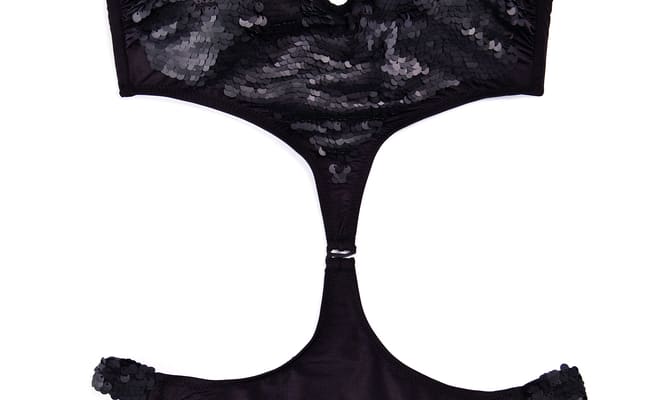Male Thongs: A Practical Guide to Styles, Fit, Fabrics, Care, and Use
Male thongs have evolved from niche underwear to a practical choice for many men seeking minimal coverage and reduced visible panty lines. This comprehensive guide examines the various aspects of male thongs, from understanding different styles and their intended purposes to selecting the right fit and fabric. Whether you're considering this underwear style for athletic activities, fashion requirements, or personal comfort, understanding the fundamentals helps make informed decisions about this distinctive undergarment option.

Male thongs represent a specialized category of underwear designed to provide minimal coverage while maintaining essential support and comfort. Understanding the practical aspects of this undergarment style helps men make informed choices based on their specific needs and preferences.
Types and Intended Uses
Male thongs come in several distinct styles, each serving different purposes and preferences. Traditional thongs feature a narrow waistband with minimal back coverage, connected by a thin strip of fabric. G-strings offer even less coverage with an extremely narrow back strap, while C-strings eliminate waistbands entirely, relying on internal structure for positioning.
Athletic thongs incorporate moisture-wicking materials and enhanced support features for sports activities. Fashion thongs focus on aesthetics with decorative elements, while everyday thongs prioritize comfort and practicality. Some designs include pouches for enhanced support, while others feature seamless construction to eliminate visible lines under fitted clothing.
Choosing the Right Fit and Size
Proper sizing ensures comfort and functionality in male thongs. Most manufacturers use standard underwear sizing, but the unique cut requires attention to specific measurements. The waistband should sit comfortably without digging into skin, while the pouch should provide adequate room without being too loose or restrictive.
Fit considerations include leg opening comfort, as the high-cut design can cause chafing if too tight. The back strap should rest naturally without pulling or shifting during movement. Many brands offer size charts specific to thong styles, accounting for the different proportions compared to traditional underwear. Trying different brands helps identify the best fit, as sizing can vary between manufacturers.
Fabric Options and Breathability
Fabric selection significantly impacts comfort and performance in male thongs. Cotton provides natural breathability and softness but may retain moisture during physical activity. Modal offers silk-like smoothness with better moisture management than cotton. Bamboo fabric combines antimicrobial properties with excellent breathability and temperature regulation.
Synthetic blends like polyester-spandex provide stretch and durability while offering quick-drying properties. Microfiber creates smooth, seamless finishes ideal for wearing under fitted clothing. Mesh panels in strategic areas enhance ventilation, while moisture-wicking treatments help manage perspiration. Premium options include merino wool blends that naturally regulate temperature and resist odors.
Care, Washing, and Longevity
Proper care extends the lifespan of male thongs and maintains their fit and appearance. Hand washing in cool water with gentle detergent preserves elastic fibers and prevents stretching. Machine washing should use delicate cycles with like colors and mild detergents. Avoid fabric softeners, which can break down elastic materials and reduce moisture-wicking properties.
Air drying prevents heat damage that can cause shrinkage or elastic degradation. Avoid wringing or twisting wet garments, instead gently pressing out excess water. Store thongs flat or hanging to prevent creasing of the minimal fabric. Replace underwear when elastic loses its stretch, fabric becomes thin, or seams begin to fray, typically after 6-12 months of regular wear.
| Brand | Style Type | Price Range | Key Features |
|---|---|---|---|
| Calvin Klein | Fashion/Everyday | $15-25 | Cotton blends, classic waistband |
| Hugo Boss | Premium | $25-40 | Modal fabrics, seamless construction |
| 2(x)ist | Athletic | $18-30 | Moisture-wicking, performance materials |
| Diesel | Fashion | $20-35 | Bold designs, premium cotton |
| Emporio Armani | Luxury | $30-50 | Italian craftsmanship, premium fabrics |
Prices, rates, or cost estimates mentioned in this article are based on the latest available information but may change over time. Independent research is advised before making financial decisions.
Comfort, Support, and Health Considerations
Comfort in male thongs depends on proper fit, quality construction, and appropriate fabric selection. The minimal coverage design requires careful attention to seam placement and elastic tension. Quality thongs use flat seams to prevent chafing and irritation. The pouch design should provide adequate support without compression, maintaining proper positioning throughout daily activities.
Health considerations include choosing breathable fabrics to prevent moisture buildup and bacterial growth. Natural fibers or moisture-wicking synthetics help maintain proper hygiene. The minimal back coverage reduces fabric contact with sensitive areas, which some men find more comfortable than traditional underwear styles. However, the narrow straps may cause discomfort for those with sensitive skin or specific body shapes.
Regular washing and proper hygiene practices remain essential regardless of underwear style. Men with specific medical conditions or sensitivities should consult healthcare providers about appropriate underwear choices. The reduced fabric coverage may not provide adequate warmth in cold climates, requiring consideration of outer clothing layers.
Male thongs serve specific purposes and preferences within the broader underwear category. Understanding the various styles, fit requirements, fabric options, and care instructions helps men make informed decisions about incorporating this underwear style into their wardrobe. Success with male thongs depends on selecting appropriate styles for intended uses, ensuring proper fit, and maintaining good hygiene practices.




